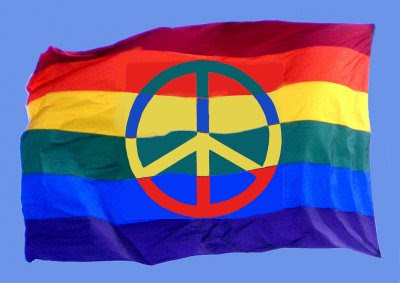Homosexuality, Bohemianism, and New York

"Qershor 2008." St. John's Valdosta Blog. Web. 09 Mar. 2010. <http://stjohnsvaldosta.blogspot.com/2008_06_01_archive.html>.
Homosexuality has been a topic of debate for the last century. George Chauncey's Gay New York: Gender, Urban Culture, and the Making of the Gay Male World explores the history of homosexuality in New York City, particularly within the East Village and Harlem. Chauncey sheds an interesting light upon the creation and evolution of homosexuality within the confines of two separate neighborhoods. The development of the piece provides insight into the center of the homosexual community throughout the 1920's and 1930's. In addition, the Building Gay Neighborhood Enclaves: The Village and Harlem provides foreshadowing into the future events, which took place 40 to 60 years later.
Throughout his piece, Chauncey describes the evolution of the gay community in New York. He forms his work around two particular communities: the Village and Harlem. Both neighborhoods participated in open homosexuality; however, they participated in homosexuality in radically different ways. It is interesting to note that homosexual communities were not only labeled by their inhabitants, but also by the race of these inhabitants. Furthermore, societies were essentially judged by the stereotypes associated with them.
Chauncey describes Harlem, a predominantly black community, as a shelter to a more radical form of East Village homosexuality. He states that while “the Village’s most flamboyant homosexuals wore long hair; Harlem’s wore long dresses.” It is interesting to note that although homosexuality in Harlem was far more extreme, the Village still received the most attention for homosexuality. As Chauncey explains: the white-world’s stereotype of Harlem, as a “black metropolis,” eclipsed the neighborhoods homosexuality. Interestingly enough, during the 1920’s, race decided which neighborhoods were criticized for public displays of homosexuality.
In addition, Chauncey’s characterization of the two neighborhoods foreshadows future events. The “free love” movement, which occurred in the Village and Harlem during the 1920’s, may be seen as an early form of the 1970’s hippie movement. Similarly, conversation topics, such as sexuality and Birth Control, can be seen as an early break from the pre-war conservative traditions of America. Only recently have debates about sexuality and abortion become widespread throughout the United States.
Finally, and most interestingly, is how popular homosexuality became to the New York youth. Teenagers and young adults saw homosexuality as a trend rather than a natural sexual preference. To others, such as police officers and “slummers,” homosexual shows and neighborhoods became an attraction. Essentially, homosexual movements labeled neighborhoods for decades to come.
- Pavel Faynleyb's blog
- Login or register to post comments
